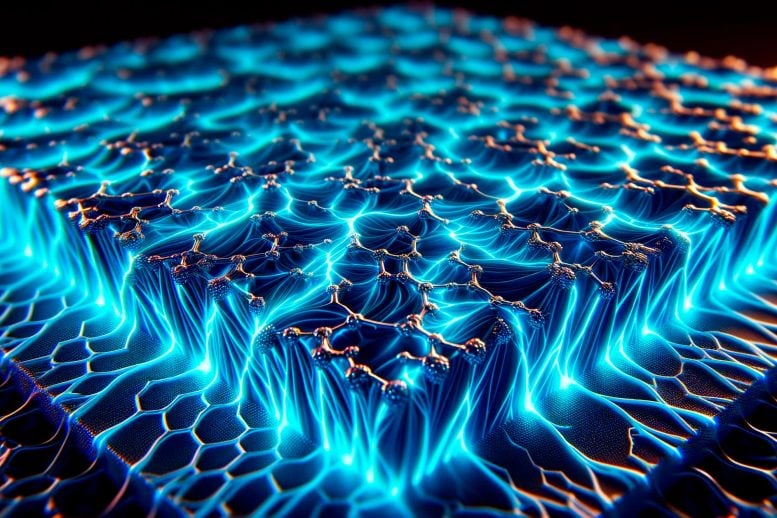
Research has produced a ferroelectric capacitor with 19 times the energy density of current models and over 90% efficiency, using novel 2D/3D/2D heterostructures. Credit: SciTechDaily.com
Scientists have developed a new method to control the relaxation time of ferroelectric capacitors using 2D materials, significantly enhancing their energy storage capabilities. This innovation has led to a structure that improves energy density and efficiency, promising advancements in high-power electronics and sustainable technologies.
Electrostatic capacitors play a crucial role in modern electronics. They enable ultrafast charging and discharging, providing energy storage and power for devices ranging from smartphones, laptops, and routers to medical devices, automotive electronics, and industrial equipment. However, the ferroelectric materials used in capacitors have significant energy loss due to their material properties, making it difficult to provide high energy storage capability.
Innovations in Ferroelectric Capacitors
Sang-Hoon Bae, assistant professor of mechanical engineering and materials science in the McKelvey School of Engineering at Washington University in St. Louis, has addressed this long-standing challenge in deploying ferroelectric materials for energy storage applications.
In a study published today (April 18) in the journal Science, Bae and his collaborators, including Rohan Mishra, associate professor of mechanical engineering & materials science, and Chuan Wang, associate professor of electrical & systems engineering, both at WashU, and Frances Ross, the TDK Professor in Materials Science and Engineering at SciTechDaily